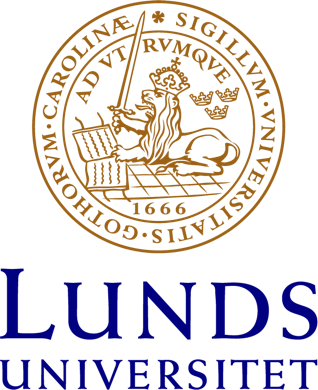- CCS mini-symposium - Mapping the body across cultures: shared patterns and variations of body representation
- Exploring frame of reference selection in Marshallese
- The amalgamated mind: Between function and experience
- Tentative suggestions on the psycho-cognitive basis of the mimic octopus’ semiosis
- Enaction, Embodiment and Language
- Metaphor and Myth. Are “worldview metaphors” really metaphors?
- Do Rock Carvings Tell Stories? - Aspects of Narrativity in Scandinavian Petroglyphs
- Mini-symposium: Memory research and street art
- Cosmic Anthrobots: Conjecturing Our Mode of Collaboration With Robonauts
- Examining collaborative cognition by modeling communication sequence dynamics and movement coordination
- Virtual Human Simulation of Awareness
- Edith Stein’s Empathic approach to Intersubjectivity
- VisMet 1.0: A corpus of visual metaphors
- Ethnolinguistics and the formation of future tense: with particular focus on greetings
- Assessing Agency, Moral and Otherwise: Beyond the Machine Question
- Pantomime Workshop September 8 2017
- On norms and experience in structural linguistics
- The Sedimentation and Motivation Model in an Ecological Theory of Metaphor
- General reflections and report on my 6 months scholarship in Chengdu, China
- Past Seminars Recent
- Past seminars
- Constituent order in non-verbal representations: introduction of new film stimuli and a pilot study with gestures
- Constructing a Digital Archive on Street Art: Methodological Challenges A pilot study of Athens, Greece
- The effects of imitation on imitation, play and emotional rapport - a report on the PLIMI project
- Deconstructed opera & operaimprovisation - a comparison of two contrary concepts and their influence on opera singers and audience
- The aspectual potential of verbs and lexical semantic typology
- Intersubjectivity and dialogue
- The aspectual potential of verbs and lexical semantic typology
- Relaxing the “boundary-crossing constraint” in (supposedly) verb framed languages
- Laughter at the preschool: Semiotic properties and emotional intersubjectivity
- Principles of Structural Phenomenology
- Reconciling iconicity of distance with frequency to explain Paamese grammatical asymmetries
- Facing methodological challenges in multimodal metaphor research
- Bats Out of the Belfry: The Nature of Metaphor, with Special Attention to Pictorial Metaphors
- Umberto Eco’s Legacy in Visual Semiotics
- Reassessing Metaphor
- Norms of language: What kinds and where from? Insights from phenomenology
- Perceptual and symbolic adaptations in prehistoric semiotic behavior: an experimental approach.
- Left-right orientation: the aesthetic preference in images from a semiotic point of view
- The Structure and Cognition of Visual Narrative
- Coherence and Truthfulness in Communication Intracommunicational and Extracommunicational Indexicality
- Borderline Personality Disorder and the five-factor model of personality traits. A correlative study of two self-report instruments (BPI and NEO PI- R)
- Epistemological Prolegomena to the Cognitive Semiotics of Evolution and Development
- The PART-WHOLE schema we live through
- Different definitions lead to different conclusions in the study of (iconic) gestures
- Jordan Zlatev
- The Iconicity of Distance in Paamese Language and Culture
- Master Narratives and the (Pictorial) Construction of Otherness: Anti-Semitic Images in the Third Reich and Beyond
- Color Representation in Chinese Sentence Comprehension
- Creativity in Linguistic Metaphor
- Digital imaging and visual semiotics
- From Experience to Imagination:The Origin and Evolution of Language As a Communication Technology
- An Imaginary Musical Road Movie:
- Embodied intersubjectivity, non-actual motion expressions and the sedimentation of meaning
- Language & cognition – Space, perception, grammaticalization
- The objectification of space
- Consciousness, conceptual agency, and the "unbinding" problem
- Hur människan blev ett så annorlunda djur
- 2015-11-26
- 2015-11-05
- 2015-09-17
- 2015-11-11
- 2015-11-12
- 2015-10-22
- 2015-10-15
- 2015-05-28
- 2015-05-21
- 2015-06-04
- 2015-04-16
- 2015-03-19
- 2015-02-05-12
- 2015-01-22
- 2015-01-29
- 2014-12-18
- 2014-12-10
- 2014-12-11
- 2014-12-04
- 2014-11-27
- 2014-11-20
- 2014-11-13
- 2014-11-06
- 2014-10-30
- 2014-10-23
- 2014-10-16
- 2014-10-09
- 2014-10-02
- 2014-09-11
- 2014-09-04
- 2014-08-28
- 2014-06-12
- 2014-05-22
- 2014-04-03
- 2014-03-27
- 2014-03-13
- 2014-03-06
- 2014-02-27
- 2014-02-13
- 2014-02-06
- 2014-01-23
- 2013-12-19
- 2013-12-18
- 2013-12-12
- 2013-12-11
- 2013-12-05
- 2013-11-28
- 2013-11-21
- 2013-11-14
- 2013-11-07
- 2013-10-24
- 2013-10-17
- 2013-10-10
- 2013-10-09
- 2013-09-26
- 2013-09-19
- 2013-09-12
- 2013-09-10
- 2013-09-05
- 2013-06-13
- 2013-05-23
- 2013-05-22
- 2013-05-14
- 2013-05-10
- 2013-05-02
- 2013-04-25
- 2013-04-11
- 2013-03-22
- 2013-03-21
- 2013-03-14
- 2013-03-07
- 2013-02-28
- 2013-02-14
- 2013-01-31
- 2013-01-24
- 2013-01-17
- 2012-12-06
- 2012-11-30
- 2012-11-22
- 2012-11-15
- 2012-11-08
- 2012-11-01
- 2012-10-25
- 2012-10-18
- 2012-10-01b
- 2012-10-01a
- 2012-09-27
- 2012-09-13
- 2012-08-30
- 2012-08-23
- 2012-06-07
- 2012-05-31
- 2012-05-24
- 2012-05-09
- 2012-05-03
- 2012-04-26
- 2012-03-29
- 2012-03-15
- 2012-03-14
- 2012-03-01
- 2012-02-23
- 2012-02-16
- 2012-02-09
- 2012-02-02
- 2012-01-19
- 2011-12-15
- 2011-12-08
- 2011-12-07
- 2011-11-24
- 2011-11-23
- 2011-11-21
- 2011-11-17
- 2011-11-10
- 2011-10-27
- 2011-10-27-extra
- 2011-10-26
- 2011-10-13
- 2011-09-29
- 2011-09-28
- 2011-09-22
- 2011-09-15
- 2011-09-01
- 2011-05-19
- 2011-05-17
- 2011-04-14
- 2011-03-24
- 2010-11-04
Sidansvarig: Goran.Sonessonsemiotik.luse | 2013-01-18
